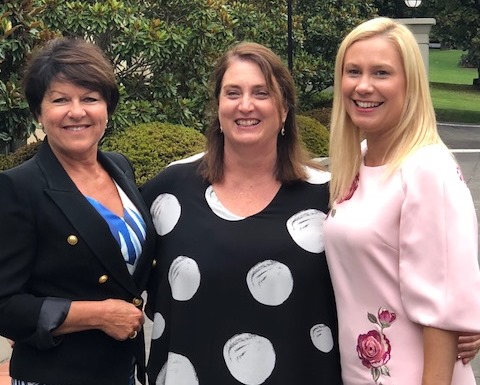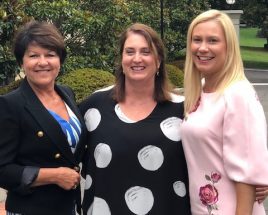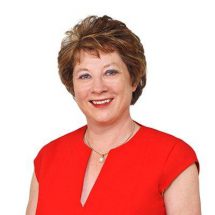
Among a series of events marking International Women’s Day yesterday were calls for initiatives to boost women’s representation in elected and executive positions.
From Australia’s 537 local government bodies right up to the Federal Parliament in Canberra, greater efforts are needed to increase the number of women across all levels of government in Australia.
That was the clear message from a plethora of events held across the country yesterday to mark International Women’s Day.
Australia’s first female Prime Minister Julia Gillard pointed out that women currently make up less than a quarter of the country’s national parliamentarians, in a speech delivered in Melbourne.
“At the current pace, it will take another half-century for the number of women in national parliaments to reach parity with men,” she said.
“And, even worse, when progress is made, it can also be reversed. Women are more under-represented in the American cabinet than at any time since the Reagan administration. Even in Nordic countries, often held up as beacons of progress, there has been a 6.2 per cent drop in the number of female ministers since 2015 to 43.5 per cent.”
More female councillors, staff
At local government level there was a clear focus on the need for concrete measures to achieve gender parity.
In Sydney, Local Government NSW president Linda Scott called for more female councillors and council staff at the peak body’s inaugural International Women’s Day lunch.
The event aimed to celebrate the achievements of women in local government but also to promote the need for gender parity.
@ClrLindaScott says many remarkable women are involved in all aspects of local govt. Women represent 29.5% of all elected councillors in NSW (up from 27% in 2012), but we still lag behind other states. We need to #PressForProgress . #IWD2018 #InternationalWomensDay pic.twitter.com/HvXbVSYZSR
— Local Government NSW (@LGNSW) March 8, 2018
Cr Scott said that while increasing numbers of women were standing for election to councils more were needed to ensure local government truly represented the communities it serves.
She pointed out that only 14 per cent of NSW’s 128 councils have female general managers, and just 29 per cent are represented by female mayors – a figure that’s doubled in the past two decades.
LGNSW has provided several initiatives to support women including the Local Government Capability Framework and a women’s development program, which includes a mentoring scheme.
Tasmania launches campaign

Similarly, in Tasmania, the state branch of the Australian Local Government Women’s Association launched the WomenCan Campaign encouraging more women to consider running for election to local government.
The campaign, which will immediately focus on raising awareness of the forthcoming local government elections in October, encourages women to nominate, promotes the benefits of leadership roles and further women’s knowledge of the functions of local government.
It will also introduce mentors to potential candidates and facilitate networking for women interested in participating in local government.
The campaign was launched at a Local Government Association of Tasmania breakfast yesterday that also highlighted the achievements of women in Tasmanian local government.
Funded programs needed: women’s group
According to Coral Ross, national president of the Australian Local Government Women’s Association, the number of women elected and in senior roles is increasing, but very slowly.
“In 2010, women were 28 per cent of councillors, and 5 per cent of CEOs and 20 per cent of senior managers. Today they’re 33 per cent of councillors, 7 per cent of CEOs and about 30 per cent of senior managers,” she told Government News yesterday.
But these national figures hide considerable variation across the country, Cr Ross said.
She pointed out the numbers haven’t always moved in the right direction:

“Last year’s NT elections saw the percentage of women councillors drop from 36 per cent to 33 per cent, and despite the percentage of women councillors in Queensland increasing at the 2016 election it’s still below that of 2008.”
Discussing initiatives to get more women into local government, Cr Ross pointed to Victoria where there has been consistent state funding to encourage women to stand for council.
“There was a Territory funded program in 2011 to encourage women to stand for election but not in 2017, which could explain the drop in the numbers of women elected in the NT.”
Mentoring is also needed and previous Federal Governments have provided funding for such programs, she said.
“There needs to be provisions in the state Local Government Acts for maternity leave and reimbursement of childcare or caring costs – inhibitors of women standing for election. Harassment and bullying is also an issue and there needs to be a complaints process outside Councils to deal with these issues,” she said.
Getting more women elected as councillors in turn sees more women appointed to senior council staff positions, Cr Ross added.
Directors: national snapshot
At the director level, official figures show progress is being made but there’s still some way to go before women achieve parity on government boards.
In 2016 the Commonwealth set a target of women holding 50 per cent of government board positions overall, and men and women each holding at least 40 per cent of positions on individual boards.
According to the Gender Balance on Australian Government Boards Report 2015-16, the latest snapshot available, women held 41 per cent of the 2,351 positions on 332 government boards in 2016, up slightly on the previous year (39.1 per cent).
Women accounted for 32 per cent of chair and deputy chair positions on these boards in 2016, up from 30 per cent in 2015.
Comment below to have your say on this story.
If you have a news story or tip-off, get in touch at editorial@governmentnews.com.au.
Sign up to the Government News newsletter.

A big change in work culture might help. An organisation that expects it’s employees to work long hours and to be available 24/7 isn’t conducive to women’s involvement (and it’s no good for the men either). Work-life balance needs to be more than a catch phrase. Read Annabel Crabb’s ‘The Wife Drought’ for a great insight into this.